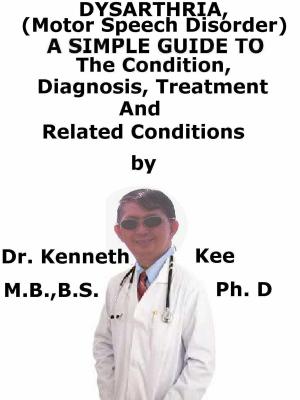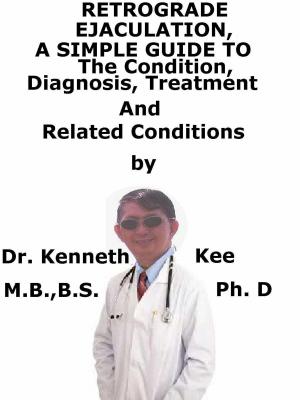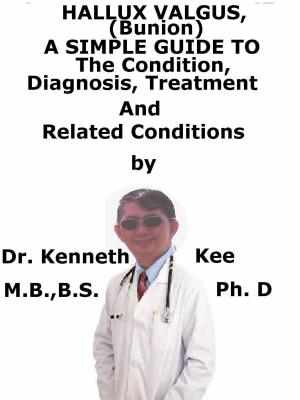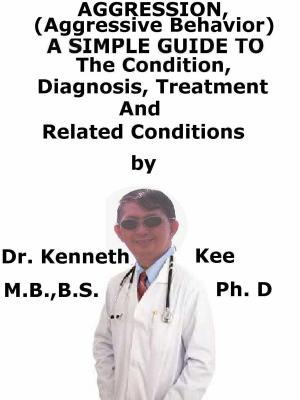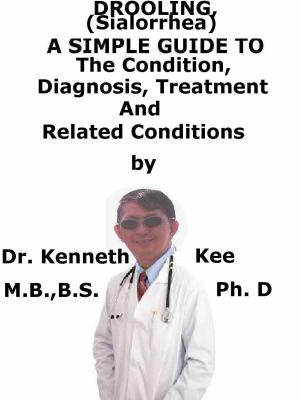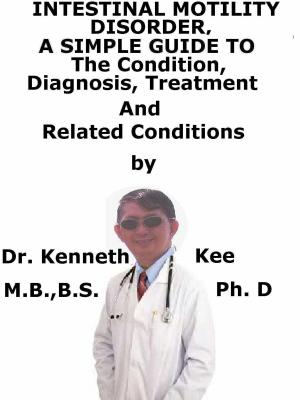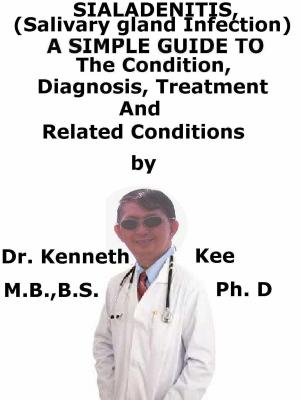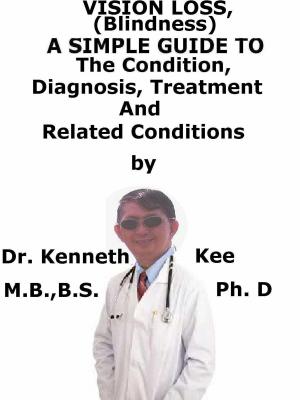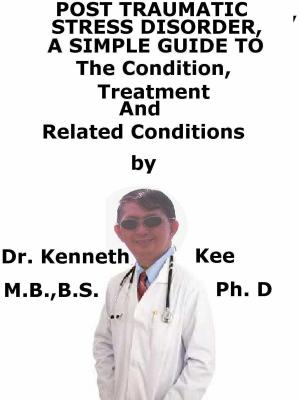Folliculitis, A Simple Guide To the Condition, Treatment And Related Diseases
Nonfiction, Health & Well Being, Medical, Specialties, Dermatology, Health, Ailments & Diseases, Skin| Author: | Kenneth Kee | ISBN: | 9781310708893 |
| Publisher: | Kenneth Kee | Publication: | December 18, 2014 |
| Imprint: | Smashwords Edition | Language: | English |
| Author: | Kenneth Kee |
| ISBN: | 9781310708893 |
| Publisher: | Kenneth Kee |
| Publication: | December 18, 2014 |
| Imprint: | Smashwords Edition |
| Language: | English |
Folliculitis is a bacterial hair follicle inflammation
The most common cause is Staphylococcal infection
It affects the root of the skin hair follicle.
It makes the skin red and irregular
People of all ages are affected by this condition
It is more common in diabetes and people with low immune reaction.
There may be pain, eczema and dermatitis
It may be caused by skin trauma and injury
Treatment is with oral antibiotic and antibiotic cream
There should be good skin hygiene
Avoid scratching the skin
Use clean razors for shaving
-An original poem by Kenneth Kee
Interesting Tips about the Sebaceous Cyst
A Healthy Lifestyle
-
Take a well Balanced Diet
-
Treatment of Folliculitis
Hot moist compresses may help drain the affected follicles.
Antibiotics applied to the skin (mupirocin) or taken by mouth (dicloxacillin)
Antifungal medications to control the infection
A. Skin hygiene
a. Clean skin with antiseptic.
b. Avoid scratching the skin
c. Avoid plaster and poultices
d. Cover with gauze after skin injury
B. Medicines:
a. Topical antibacterial such as bacitracin, neomycin, gentamycin, tetracycline erythromycin, clindamycin, mupirocin or benzoyl peroxide creams
b. Oral Antibiotics such as cephalosporins, penicillinase-resistant penicillins, macrolides, and fluoroquinolones may be given if necessary.
c. Complicated conditions such as carbuncles may require surgical debridement.
- Keep bones and body strong
Bone marrow produces our blood
Eat foods rich in calcium like yogurt, cheese, milk, and dark green vegetables.
Eat foods rich in Vitamin D, like eggs, fatty fish, cereal, and fortified milk.
Eat food rich in Vitamins B and C such as green vegetables and fruits
Zinc and other minerals are important to the body
- Get enough rest and Sleep
Avoid stress and tension
- Exercise and stay active.
It is best to do weight-bearing exercise such as walking, jogging, stair climbing, dancing, or lifting weights for 2½ hours a week.
One way to do this is to be active 30 minutes a day at least 5 days a week.
Begin slowly especially if a person has not been active.
- Do not drink more than 2 alcohol drinks a day for a man or 1 alcohol drink a day for a woman.
Alcohol use also increases the chance of falling and breaking a bone.
Alcohol can affect the neurons and brain cells.
- Stop or do not begin smoking.
It also interferes with blood supply and healing.
Chapter 1
Folliculitis
What is Folliculitis?
Folliculitis is a bacterial infection of the skin hair follicle.
Folliculitis is inflammation of one or more skin hair follicles.
It can occur anywhere on the skin
People of all ages are affected.
Folliculitis can appear on any skin bearing hair including the head, neck, trunk, buttocks, and extremities.
What are the causes of Folliculitis?
Folliculitis starts when hair follicles are damaged by rubbing from clothing, blockage of the follicle or shaving.
Most of the time, the damaged follicles become infected with Staphylococcus (staph) bacteria.
- The main cause is infection of bacteria such as Staphylococcus aureus.
Gram-negative folliculitis usually involves the face and includes Klebsiella, Enterobacter, and Proteus species
-
Poor skin hygiene
-
Skin damaged by eczema and dermatitis
-
Nasal transport of Staphylococcus aureus.
-
May occur more in diabetes and low immune system patients such as leukemia.
TABLE OF CONTENT
Introduction
Chapter 1 Folliculitis
Chapter 2 More about Folliculitis
Chapter 3 Treatment of Folliculitis
Chapter 4 Milaria
Chapter 5 Acne
Chapter 6 Impetigo
Chapter 7 Furuncle and Carbuncle
Folliculitis is a bacterial hair follicle inflammation
The most common cause is Staphylococcal infection
It affects the root of the skin hair follicle.
It makes the skin red and irregular
People of all ages are affected by this condition
It is more common in diabetes and people with low immune reaction.
There may be pain, eczema and dermatitis
It may be caused by skin trauma and injury
Treatment is with oral antibiotic and antibiotic cream
There should be good skin hygiene
Avoid scratching the skin
Use clean razors for shaving
-An original poem by Kenneth Kee
Interesting Tips about the Sebaceous Cyst
A Healthy Lifestyle
-
Take a well Balanced Diet
-
Treatment of Folliculitis
Hot moist compresses may help drain the affected follicles.
Antibiotics applied to the skin (mupirocin) or taken by mouth (dicloxacillin)
Antifungal medications to control the infection
A. Skin hygiene
a. Clean skin with antiseptic.
b. Avoid scratching the skin
c. Avoid plaster and poultices
d. Cover with gauze after skin injury
B. Medicines:
a. Topical antibacterial such as bacitracin, neomycin, gentamycin, tetracycline erythromycin, clindamycin, mupirocin or benzoyl peroxide creams
b. Oral Antibiotics such as cephalosporins, penicillinase-resistant penicillins, macrolides, and fluoroquinolones may be given if necessary.
c. Complicated conditions such as carbuncles may require surgical debridement.
- Keep bones and body strong
Bone marrow produces our blood
Eat foods rich in calcium like yogurt, cheese, milk, and dark green vegetables.
Eat foods rich in Vitamin D, like eggs, fatty fish, cereal, and fortified milk.
Eat food rich in Vitamins B and C such as green vegetables and fruits
Zinc and other minerals are important to the body
- Get enough rest and Sleep
Avoid stress and tension
- Exercise and stay active.
It is best to do weight-bearing exercise such as walking, jogging, stair climbing, dancing, or lifting weights for 2½ hours a week.
One way to do this is to be active 30 minutes a day at least 5 days a week.
Begin slowly especially if a person has not been active.
- Do not drink more than 2 alcohol drinks a day for a man or 1 alcohol drink a day for a woman.
Alcohol use also increases the chance of falling and breaking a bone.
Alcohol can affect the neurons and brain cells.
- Stop or do not begin smoking.
It also interferes with blood supply and healing.
Chapter 1
Folliculitis
What is Folliculitis?
Folliculitis is a bacterial infection of the skin hair follicle.
Folliculitis is inflammation of one or more skin hair follicles.
It can occur anywhere on the skin
People of all ages are affected.
Folliculitis can appear on any skin bearing hair including the head, neck, trunk, buttocks, and extremities.
What are the causes of Folliculitis?
Folliculitis starts when hair follicles are damaged by rubbing from clothing, blockage of the follicle or shaving.
Most of the time, the damaged follicles become infected with Staphylococcus (staph) bacteria.
- The main cause is infection of bacteria such as Staphylococcus aureus.
Gram-negative folliculitis usually involves the face and includes Klebsiella, Enterobacter, and Proteus species
-
Poor skin hygiene
-
Skin damaged by eczema and dermatitis
-
Nasal transport of Staphylococcus aureus.
-
May occur more in diabetes and low immune system patients such as leukemia.
TABLE OF CONTENT
Introduction
Chapter 1 Folliculitis
Chapter 2 More about Folliculitis
Chapter 3 Treatment of Folliculitis
Chapter 4 Milaria
Chapter 5 Acne
Chapter 6 Impetigo
Chapter 7 Furuncle and Carbuncle


